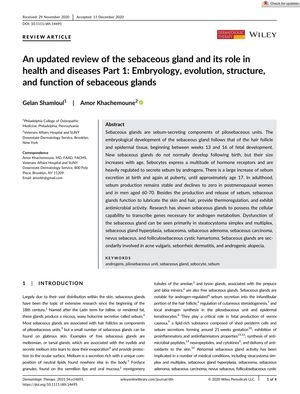An Updated Review of the Sebaceous Gland and Its Role in Health and Diseases Part 1: Embryology, Evolution, Structure, and Function of Sebaceous Glands
December 2020
in “
Dermatologic Therapy
”

TLDR Sebaceous glands in our skin, developing during pregnancy and active in puberty, produce sebum for skin lubrication, temperature control, and fighting germs, also help in hormone regulation, and their dysfunction can cause conditions like acne and hair loss.
The document reviews the function and importance of sebaceous glands, which are found in the skin's pilosebaceous units. These glands develop between the 13th and 16th weeks of pregnancy and are most active during puberty due to high androgen receptor expression. They secrete sebum, which lubricates the skin and hair, aids in thermoregulation, and has antimicrobial properties. Additionally, sebaceous glands contribute to hormone production and regulation. Dysfunction in these glands can result in various conditions, including acne vulgaris, seborrheic dermatitis, and androgenic alopecia.

